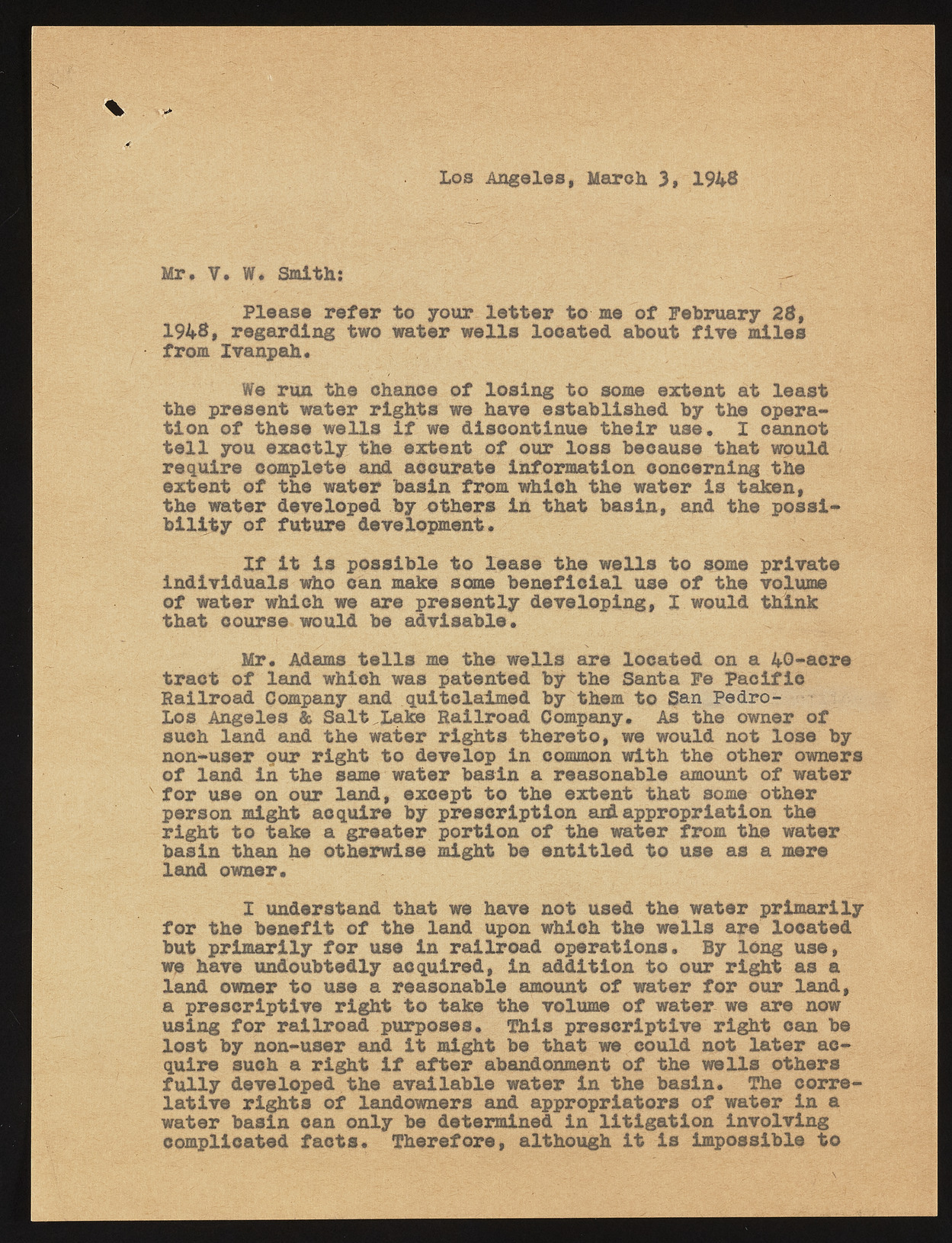Copyright & Fair-use Agreement
UNLV Special Collections provides copies of materials to facilitate private study, scholarship, or research. Material not in the public domain may be used according to fair use of copyrighted materials as defined by copyright law. Please cite us.
Please note that UNLV may not own the copyright to these materials and cannot provide permission to publish or distribute materials when UNLV is not the copyright holder. The user is solely responsible for determining the copyright status of materials and obtaining permission to use material from the copyright holder and for determining whether any permissions relating to any other rights are necessary for the intended use, and for obtaining all required permissions beyond that allowed by fair use.
Read more about our reproduction and use policy.
I agree.Information
Digital ID
Permalink
Details
Member of
More Info
Rights
Digital Provenance
Publisher
Transcription
Los Angeles, March 3, 1948 Mr, 7. W, Smith: Please refer to your letter to me of February 28, 19 48, regarding two water wells located about five miles from Ivanpah. We run the chance of losing to some extent at least the present water rights we have established by the operation of these wells if we discontinue their use. I cannot tell you exactly the extent of our loss because that would require complete and accurate information concerning the extent of the water basin from which the water is taken, the water developed by others in that basin, and the possibility of future development• If it is possible to lease the wells to some private individuals who can make some beneficial use of the volume of water which we are presently developing, I would think that course would be advisable. Mr. Adams tells me the wells are located on a 40-acre tract of land which was patented by the Santa Fe pacific Railroad Company and quitclaimed by them to San Pedro- Los Angeles & SaltLake Railroad Company. As the owner of such land and the water rights thereto, we would not lose by non-user our right to develop in common with the other owners of land in the same water basin a reasonable amount of water for use on our land, except to the extent that some other person might acquire by prescription and appropriation the right to take a greater portion of the water from the water basin than he otherwise might be entitled to use as a mere land owner. I understand that we have not used the water primarily for the benefit of the land upon which the wells are located but primarily for use in railroad operations. By long use, we have undoubtedly acquired, in addition to our right as a land owner to use a reasonable amount of water for our land, a prescriptive right to take the volume of water we are now using for railroad purposes. This prescriptive right can be lost by non-user and it might be that we could not later acquire such a right if after abandonment of the wells others fully developed the available water lative rights of landowners and appr oipnr tlhaet orbaa sionf. watTheer cionr arewater basin can only be determined in litigation Involving complicated facts. Therefore, although it is impossible to

